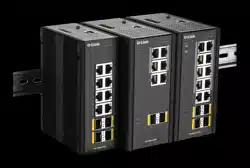Loading ...
Loading ...
Loading ...

166
Voice VLAN may add the port to more VLANs behind the scenes. Access ports have
the following characteristics:
• Member of exactly one VLAN, the Port VLAN (a.k.a. Access VLAN), which
by default is 1
• Accepts untagged and C-tagged frames
• Discards all frames that are not classified to the Access VLAN
• On egress all frames classified to the Access VLAN are transmitted
untagged. Other (dynamically added VLANs) are transmitted tagged
Trunk:
Trunk ports can carry traffic on multiple VLANs simultaneously, and are
normally used to connect to other switches. Trunk ports have the following
characteristics:
• By default, a trunk port is member of all VLANs (1-4095)
• The VLANs that a trunk port is member of may be limited by the use of
Allowed VLANs
• Frames classified to a VLAN that the port is not a member of are discarded
• By default, all frames but frames classified to the Port VLAN (a.k.a. Native
VLAN) get tagged on egress. Frames classified to the Port VLAN do not get
C-tagged on egress
• Egress tagging can be changed to tag all frames, in which case only tagged
frames are accepted on ingress
Hybrid:
Hybrid ports resemble trunk ports in many ways, but adds additional port
configuration features. In addition to the characteristics described for trunk ports,
hybrid ports have these abilities:
• Can be configured to be VLAN tag unaware, C-tag aware, S-tag aware, or
S-custom-tag aware
• Ingress filtering can be controlled
• Ingress acceptance of frames and configuration of egress tagging can be
configured independently
Port VLAN Determines the port's VLAN ID (a.k.a. PVID). Allowed VLANs are in the range 1
through 4095, default being 1.
On ingress, frames get classified to the Port VLAN if the port is configured as VLAN
Loading ...
Loading ...
Loading ...
